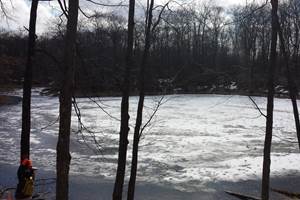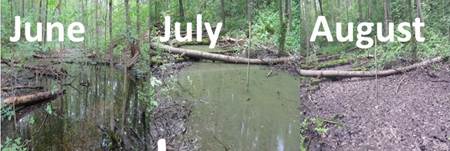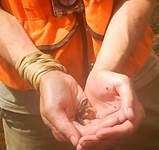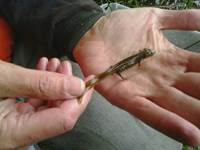We are conducting a five-year study of 57 ephemeral ponds within Wisconsin's Chippewa Moraine to identify the effects of environmental variability on aquatic macroinvertebrates, amphibians, plants and water chemistry.

Ephemeral ponds are fed by snowmelt and rainfall in the spring and dry out in the summer.

These habitats contain uniquely adapted organisms like fairy shrimp (Eubranchipus spp.), fingernail clams (Sphaeriidae), and clam shrimp (Lynceus spp.). Many species persist in dried ponds as dormant cysts and can serve as an important food source for migrating waterfowl.



Fish eat amphibians, but because ephemeral ponds are fish-free, they provide critical, safe breeding habitat for amphibians, and wood frogs (Lithobates sylvaticus) in particular. Chorus frogs, spring peepers, and blue-spotted salamanders also breed in ephemeral ponds.






